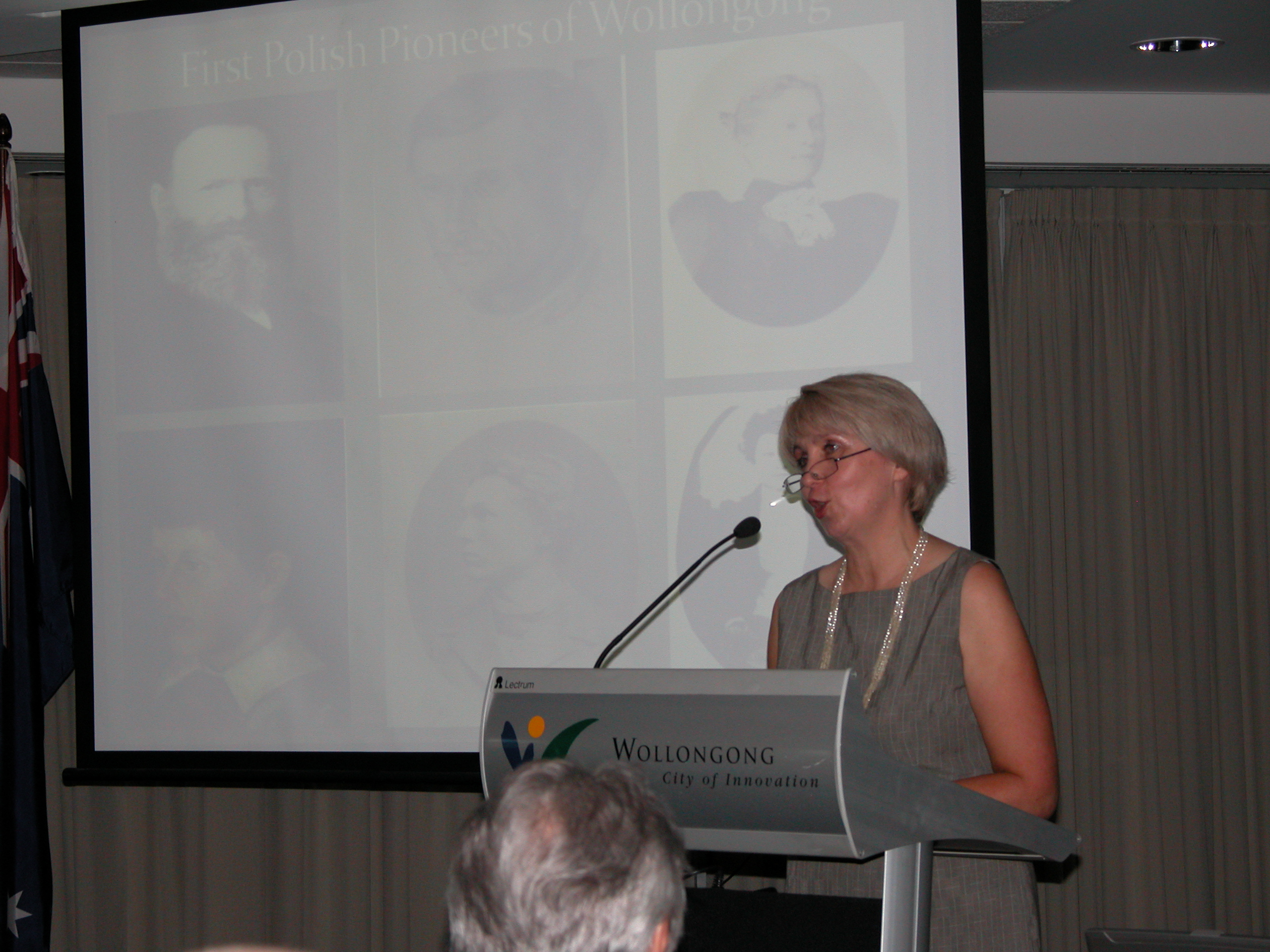In 2008 when Zofia Laba and her colleague Barbara Mazur began researching the first Polish pioneers in Wollongong they uncovered many other early pioneer migrants from diverse backgrounds who had come to Wollongong as early migrant settlers. Not only did they settle in Wollongong, but they contributed to the advancement of the fledging city in civic matters, agriculture, education, industry and the arts. This dispelled the popular view that migration to the Illawarra by people from diverse cultural backgrounds only occurred from the 1950s onwards.
Zofia and Barbara gave their first presentation on the Early Polish pioneers to Wollongong, featuring John Radecki and Ignacy Zlotkowski, at the annual presentation of the Migration Heritage Project (MHP) Annual General Meeting. The audience at the presentation was drawn from people of the wider Wollongong community. Zofia and Barbara’s presentation was a resounding success and they were joined by Michael Organ who presented his research on the famous Polish explorer Sir Paul (Pawel) Strzelecki and his visit to the Illawarra.


With the MHP’s support, Zofia embarked on expanding her researching on early pioneer migrants from non-British backgrounds who settled in the Illawarra in the 19th and 20th century. Another joint presentation at the MHP Annual General Meeting in 2010 featured Zofia and this time she presented what her research had uncovered on “Early Pioneers of Non-British Backgrounds”, including her early Polish pioneers.
In 2012, the MHP successfully applied for a grant from the Royal Australian Historical Society, Historical Research and Local Archive Projects NSW Heritage Grants Program, Department of Planning Heritage Branch to allow Zofia to undertake more research. Within the timeline of the funding grant a publication containing the history of 16 early pioneers as well as census data had been written by Zofia Laba and edited by Franca Facci and Fidelia Pontarolo, all members of the MHP committee.
Soon Zofia was very much in demand to give her Early Pioneer Presentation to the wider community, and not only in Wollongong, continuing to dispel the view that migration to the Illawarra only occurred from the 1950s onwards. The presentations were given at the following community groups:
- Fellowship of First Fleeter – ‘Early Polish Immigrants to Wollongong’
- Fellowship of First Fleeter – ‘Early Pioneers of the Illawarra’
- Illawarra Family History Group Inc – ‘Early Pioneers of the Illawarra’
- Illawarra Historical Society 2009 – https://ro.uow.edu.au/ihsbulletin/1273/
- Shellharbour Library – Heritage Festival Event 2010 – ‘Polish Pioneers of the Illawarra and the William James of Shellharbour connection
- St Scholastica’s Convent Chapel, Glebe Point – History Week 2010 ‘John Radecki and his contribution to architectural history of Sydney and NSW’, with Barbara Mazur & Kevin Little.
Interview given to ABC National by Zofia Laba prior to the presentation https://www.abc.net.au/local/stories/2010/08/30/2997190.htm
- Scot Kirk, Presbyterian Church Hamilton – ‘John Radecki and his stained glass works in NSW’
- Shellharbour Library – Heritage week Festival Event 2012 – ‘Early non-British Migrants of the Illawarra 1840-1930s’
- Wollongong Women’s Groups – ‘Early non-English Speaking pioneers of the Illawarra’
- Illawarra Historical Society – 2015 ‘Migration Heritage Project – highlights of the artistic, economic and cultural contribution of the early pioneers and post WWII migrants’
- University of the Third Age, Thirroul Group – ‘Early Pioneers of the Illawarra’
- University of the Third Age, Thirroul Group – ‘John Radecki and his contribution to the Illawarra Architectural History of the Illawarra”
- St. Paul’s Anglican Church Cobbitty – for the Australian Decorative & Fine Arts Society Camden Inc. – ‘John Radecki and his contribution to Architectural History of NSW”
- Illawarra Historical Society – ‘John Radecki and his contribution to architectural history of the Illawarra’
Zofia Laba’s primary research, together with her presentations delivered to the wider community, changed the perceptions of individuals that “all migrants arrived after World War II”. The research has also been utilised by a number of people in their publications.



